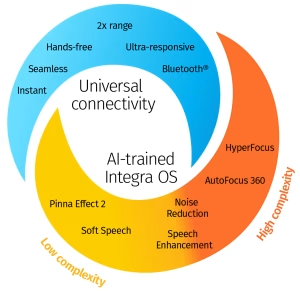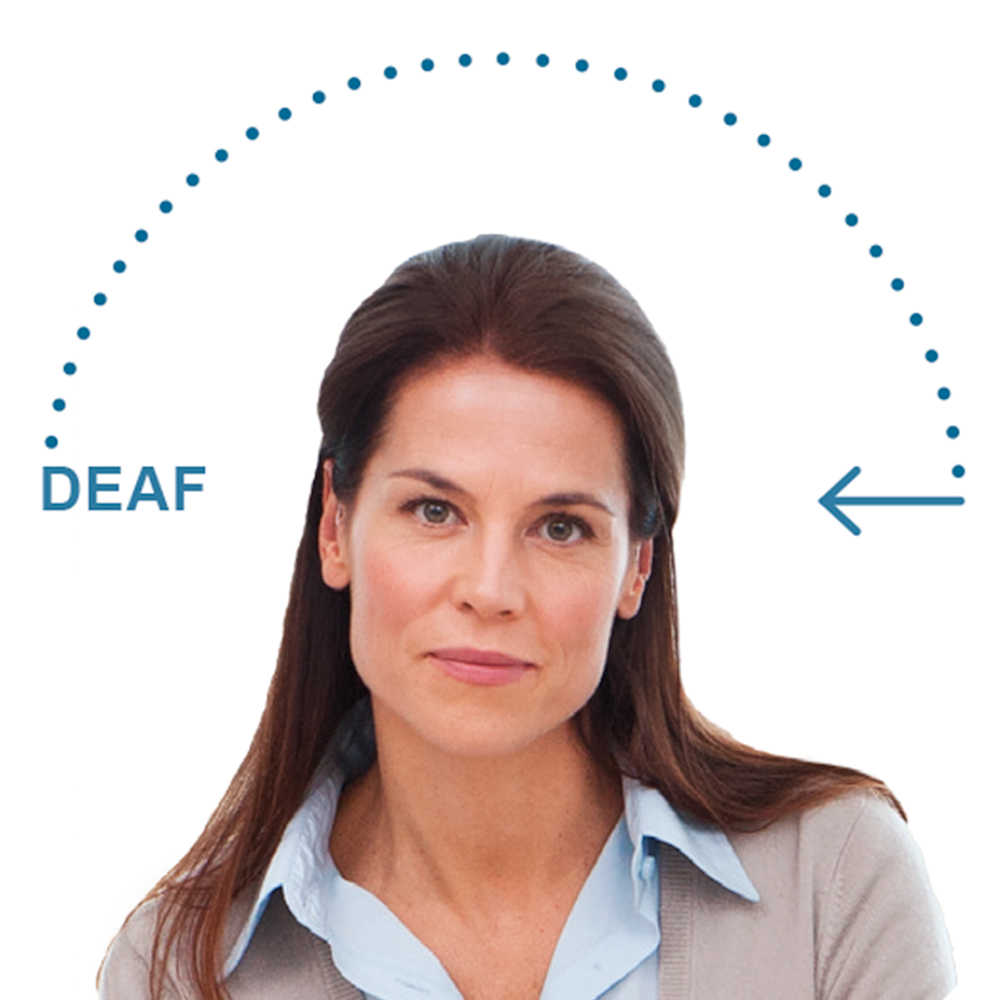

Living with hearing loss can present several challenges, affecting a person’s communication, social interactions, and overall quality of life. Thankfully, advancements in technology and audiology have led to the development of various hearing aid systems that can significantly improve hearing capabilities. Among these options, the Bicros (Bilateral Contralateral Routing of Signals) and Cros (Contralateral Routing of Signals) hearing aid systems have emerged as effective solutions for individuals with specific types of hearing loss, specifically for single sided deafness. In this blog, we will delve into how the Cros and BiCros hearing aids work. We will also discuss the people who can benefit from them.
Both the Bicros and Cros hearing aid systems are designed to address a particular type of hearing loss. This type of loss is known as unilateral hearing loss or single-sided deafness. This condition occurs when one ear has little to no hearing ability, while the other ear has normal or near-normal hearing.
The Cros system is primarily used for individuals with single-sided deafness. In this system, a microphone is placed in the non-hearing ear, which picks up sounds from that side. These sounds are then wirelessly transmitted to a receiver located in the hearing ear. The receiver amplifies the sound, making it audible to the individual.
The Bicros system is suitable for individuals with single-sided deafness and some hearing loss in the better ear. Similar to the Cros system, a microphone is placed in the non-hearing ear to capture sounds. However, in the Bicros system, the microphone also transmits the sounds to a hearing aid in the better ear. This hearing aid amplifies the sound from the non-hearing ear as well as enhances the sound from the better ear. Therefore providing a more balanced hearing experience.
Timing differences between the Cros microphone and the hearing aid play a crucial role in providing the feeling of a sound on the “bad” ear.
Interaural timing differences refer to the small time differences between when a sound arrives at one ear compared to the other ear. Our brains use these time differences as a cue to localize sound sources. In individuals with normal hearing, the brain processes these ITDs to determine the direction of the sound and create a sense of spatial awareness.
In the Bicros and Cros systems, the microphone in the non-hearing ear captures sounds from that side, including the timing information associated with those sounds. This timing information is then transmitted wirelessly to the receiver located in the “good” ear. The receiver processes this timing information along with the amplified sound from the non-hearing ear.
By analyzing the differences in time provided by the non-hearing ear, the brain can perceive the sound as originating from the direction of the non-hearing ear, even though the actual sound is being delivered to the “good” ear. This process helps create the illusion that the individual is hearing on the “bad” ear, enhancing the spatial perception and localization of sounds.
In other words, when the Bicros or Cros system transmits the sounds from the non-hearing ear to the “good” ear, it preserves the timing information associated with those sounds. By presenting this timing information to the brain along with the amplified sound, the system provides cues that enable the brain to perceive the sound as originating from the direction of the non-hearing ear.
This integration of timing information helps individuals with unilateral hearing loss better understand the spatial cues in their environment and experience a more natural and immersive auditory perception. It contributes to their ability to identify the location of sounds, distinguish between different sound sources, and engage in conversations with improved spatial awareness.
It’s important to note that while Cros and BiCros hearing aids can enhance spatial perception through ITDs, they may not fully restore the precise natural hearing experience that occurs in individuals with normal hearing in both ears. However, they offer significant improvements for individuals with unilateral hearing loss by leveraging timing cues to provide a more balanced and realistic auditory perception on that dead ear side.
As always, consulting with an audiologist or hearing healthcare professional is crucial to determine the most appropriate hearing aid system and settings for individual needs and preferences.
Everyone deserves to enjoy the richness of sound, and with the advancements in hearing aid technology, no one should have to live with the limitations of hearing loss.
The Bicros and Cros hearing aid systems offer significant benefits to individuals with unilateral hearing loss, allowing them to regain better sound perception on the unaidable ear side and localization. Here are some specific cases where these systems can be beneficial:
Individuals with single-sided deafness, where one ear has little to no hearing ability, can greatly benefit from Cros or Bicros systems. These systems help transmit sound from the non-hearing ear to the hearing ear, enabling improved hearing and sound localization.
People with asymmetrical hearing loss, where there is a significant difference in hearing ability between the ears, can find relief with Bicros systems. The Bicros system amplifies sound from the non-hearing ear while simultaneously improving sound quality and amplification in the better ear.
Combinations of different types and degrees of hearing loss can be more complex than a straightforward case of complete hearing loss on one ear and partial hearing on the other. In reality, there is often a need to consider the individual’s unique circumstances, lifestyle, and specific requirements, rather than relying solely on textbook definitions.
During my studies in San Diego, I had a professor who emphasized that textbook scenarios are only found in textbooks. Real-life situations demand a more personalized approach. Throughout my career, I have encountered cases where individuals who appeared to be ideal candidates for a Bicros system expressed a preference for a hearing aid in their “bad” ear. Conversely, some patients who seemed suitable for two hearing aids ended up opting for a Bicros system in one ear due to their inability to tolerate sound in that particular ear.
It highlights the importance of understanding the individual’s needs, preferences, and comfort levels when considering different hearing aid options. While certain systems like Bicros and Cros are designed to address specific hearing loss situations, it’s crucial to tailor the solution to the person’s unique circumstances rather than solely relying on predefined categories.
By taking into account the individual’s lifestyle, communication goals, sound tolerance, and personal preferences, hearing healthcare professionals can provide more personalized and effective solutions. This approach ensures that the chosen hearing aid system aligns with the person’s specific needs, leading to improved satisfaction and better outcomes.
Every individual’s hearing loss is unique, and their journey to finding the right hearing solution should be guided by a comprehensive evaluation and collaboration between the individual and their audiologist or hearing healthcare professional.
The Bicros and Cros hearing aid systems are innovative solutions that offer enhanced hearing capabilities for individuals with unilateral hearing loss. By transmitting sound from the non-hearing ear to the hearing ear or the better ear, these systems improve sound perception, localization, and overall quality of life. If you or someone you know experiences single-sided deafness or asymmetrical hearing loss, it is worth considering these advanced hearing aid options and consulting with an audiologist to determine the most suitable solution.
Powered By SinglerDesign.com